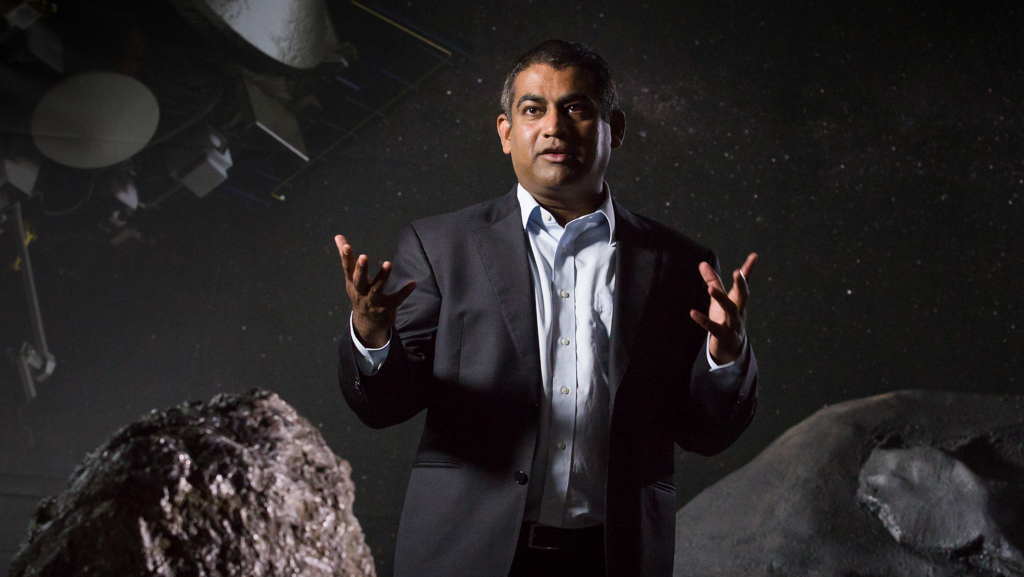 University of Arizona planetary scientist Vishnu Reddy is an asteroid expert.
University of Arizona planetary scientist Vishnu Reddy is an asteroid expert.
The University of Arizona this fall will lead a global exercise using an Earth-approaching asteroid to simulate how the world would respond to a space-rock impact.
An asteroid discovered in 2012 will pass close to, but safely by, Earth on Oct. 12. Planetary scientists, including asteroid expert Vishnu Reddy of the UA, decided to use the event to prepare for a real impact.
“While the risk is small in general, we cannot predict at any given time as to whether there will be an impact or not. Impacts by small asteroids happen on a regular basis. These mostly burn up harmlessly in the atmosphere, so the atmosphere protects us,” Reddy said.
More than 90 percent of the solar system’s large asteroids are catalogued and don’t pose a threat to earth, he said.
During the exercise, scientists will try to predict the approaching asteroid’s orbit and determine potential impact effects and ways to mitigate them. Scientists want to know what the asteroid looks like and what it’s made of, he said.
While NASA and other organizations have conducted planetary defense drills in the past, Reddy said this is the first time a real asteroid has been part of the exercises.
“We thought this would be a great opportunity to learn how to coordinate not only between observers within the U.S. but also observers around the world, about how to track asteroids,” he said.
Reddy said 20 observatories around the world will participate in the exercise when asteroid “TC4” passes as close as 4,200 miles above the Earth's surface.
In addition to the UA's Lunar and Planetary Lab, other Arizona participants include the Catalina Sky Survey, the Spacewatch Project, and Northern Arizona University and Lowell Observatory in Flagstaff.


By submitting your comments, you hereby give AZPM the right to post your comments and potentially use them in any other form of media operated by this institution.